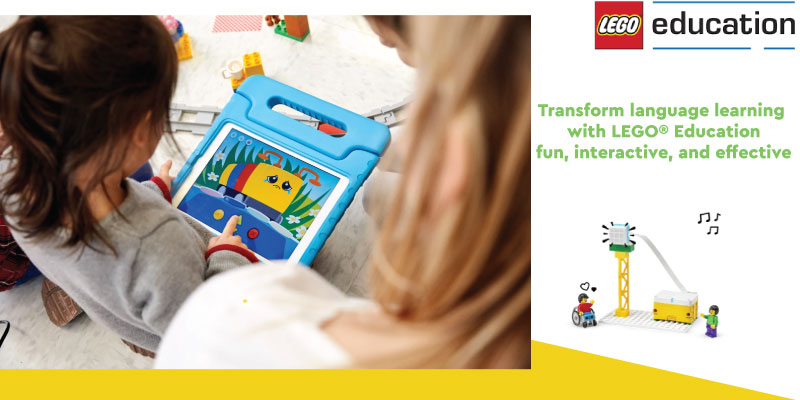Language proficiency is undeniably very important for academic and professional achievement. Traditionally, reading, writing, and speaking exercises have been the primary methods for language development. However, the educational landscape is evolving, and innovative tools like LEGO® Education are revolutionizing language learning. By merging fun and education, LEGO® Education offers a dynamic approach to language acquisition.
Storytelling and Narrative Skills
LEGO® Education kits often come with story starters and scenario-based tasks that prompt children to create narratives. This approach is particularly beneficial for developing storytelling and narrative skills. For example, the LEGO® Education STEAM Park set includes various characters, which children can use to create their own stories. They can build scenes from their imagination and then narrate their stories to the class.
This not only enhances their ability to construct coherent narratives but also helps them understand the elements of a story, such as plot, character, and setting. By physically building their stories, children can visualize and better comprehend these narrative components.
Enhancing Vocabulary and Communication Skills
One of the primary ways LEGO® Education aids in building language skills is by enhancing vocabulary and communication. When children are given a task to build something with LEGO bricks, they are often required to describe their creations. This description process helps them learn new words and use them in context. For instance, if a child builds a castle, they might learn words like “turret,” “moat,” and “drawbridge.”
Moreover, working in groups encourages children to communicate with their peers. They have to articulate their ideas, listen to others, and collaborate to achieve a common goal. This interactive process significantly improves their communication skills and builds their confidence in expressing themselves.
Reading Comprehension and Sequencing
Building with LEGO® Education kits requires children to follow instructions and understand sequences. This process is analogous to understanding the sequence of events in a story, which is a critical component of reading comprehension. For example, when children follow step-by-step instructions to build a model, they are practicing the skill of sequencing. They learn that certain steps must be completed before others, much like understanding the beginning, middle, and end of a story.
Additionally, some LEGO® Education products come with accompanying books that provide context and background for the building tasks. Reading these books enhances children’s reading comprehension as they need to understand the text to complete their builds correctly.
The Power of Play in Learning
One of the key advantages of Play-way learning is that this method makes learning feel less like a chore and more like a fun activity. When students are having fun, they’re more likely to retain what they’ve learned. LEGO® Education taps into this potential by using play as a medium to teach complex concepts. Through structured and guided play, children can explore language in a more relaxed and enjoyable environment.
Encouraging Critical Thinking and Problem-Solving
Language learning is not just about vocabulary and grammar; it also involves critical thinking and problem-solving skills. LEGO® Education promotes these skills through its hands-on activities. When children encounter challenges while building they must think critically to find solutions. This problem-solving process often requires them to use descriptive language and specific terminology, thereby enhancing their language skills.
For example, a child building an ‘O-Shaped Track’ using LEGO® Education Coding Express Set might encounter structural issues. To solve these, they must discuss and analyze the problem, brainstorm possible solutions, and implement their ideas. This process involves a lot of communication and descriptive language use, which reinforces their language abilities.
Real-World Applications and Integration
LEGO® Education is not just limited to language arts; it can be integrated across various subjects, providing a comprehensive learning experience. For instance, in science, building a model of the ‘gymnast-powered car’
can help them learn and use scientific terminology such as ‘motion’ and ‘force’.
This cross-disciplinary approach ensures that children are not only learning language skills in isolation but are also applying them in real-world contexts.
LEGO® Education offers a unique and effective way to build language skills among learners. By incorporating play, storytelling, and hands-on activities, it makes learning engaging and enjoyable. As educators and parents, leveraging tools like LEGO® Education can significantly enhance the language learning experience, setting children on a path to academic success and lifelong learning.






Recent Comments